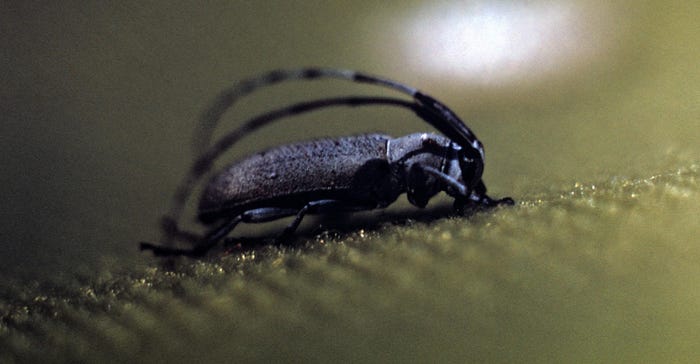
Last year, the University of Missouri’s trap cropping study for Dectes stem borer was sidelined because of the COVID-19 pandemic, MU Extension entomologist Kevin Rice says.
“Dectes stem borer has actually been an emergent pest in pockets of the state causing severe damage,” Rice says. MU funded a project to assess location and population of this pest in the state.
In 2020, Rice looked for farmers with a history of soybean stem borer to participate in the field study where they would plant four rows of sunflowers around the soybeans to use as a trap crop, and then researchers would count the number of stem borers.
“Unfortunately for the Missouri field sites, that happened right as COVID started,” he explains during the MU Crop Management Conference. “We were hiring technicians and undergrads that were going to be driving around the state to set that up and to take that data, and that was one of the casualties of the virus.”
However, the study is expected to go on this year. As per last year, the program will pay for trap crop seed and a minor stipend to offset yield loss with the sunflower planting.
Damage is done
The Dectes stem borer, more commonly known as soybean stem borer, is a small, long-horned beetle whose larvae attack soybean plants. The larvae have bodies that look like an accordion with a larger brown head.
Larvae tunnel inside the plant, which can result in diminished water and nutrient uptake leading to soybean yield loss. Some university data shows as much as 40% soybean yield loss from soybean stem borer.

HORNED PEST: As an adult, the stem borer is a long-horned beetle.
Farmers in Texas, Kansas and Nebraska currently deal with the pest, but the numbers are on the rise. The reason, Rice says, is the lack of control options for soybean stem borer.
The adults have a drawn-out emergence window, from late June into early July, which makes applying a pesticide very difficult. In addition, the larvae are terminal feeders later in the season, so systemic insecticides aren't very effective.
Rice says laboratory trials found that if Dectes stem borer has a choice between a sunflower and a soybean host, the females 100% of the time pick sunflowers to deposit their eggs.
Management options
Only a few management practices reduce stand and yield losses from soybean stem borer damage, according to a MU Extension soybean pest management guide. These include:
Effective control of weed host plants like cocklebur and giant ragweed reduces egg-laying sites for the female beetles.
Harvest the crop as soon as it matures to reduce losses from lodged plants.
Fall tillage kills Dectes stem borer larvae. Plant stubble should be buried at least 2 to 3 inches.
Avoid planting soybeans in fields adjacent to fields that were heavily infested the previous year.
By tracking where the pest is headed, soybean farmers can make management decisions to reduce yield loss. Rice is asking farmers wanting to take part in this year’s Dectes stem borer trap cropping study to contact him via email at [email protected] or call 573-771-7386.
Read more about:
Covid 19About the Author(s)
You May Also Like






